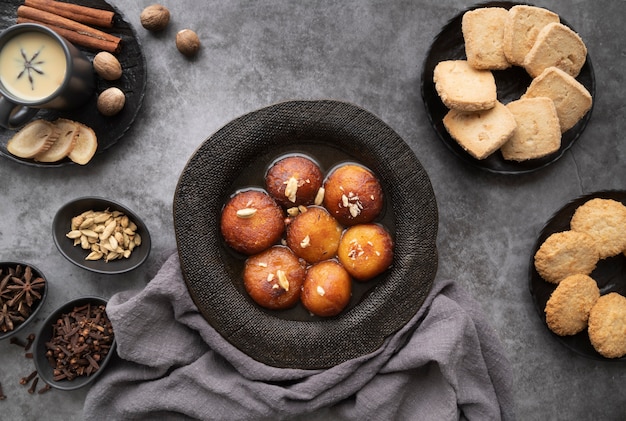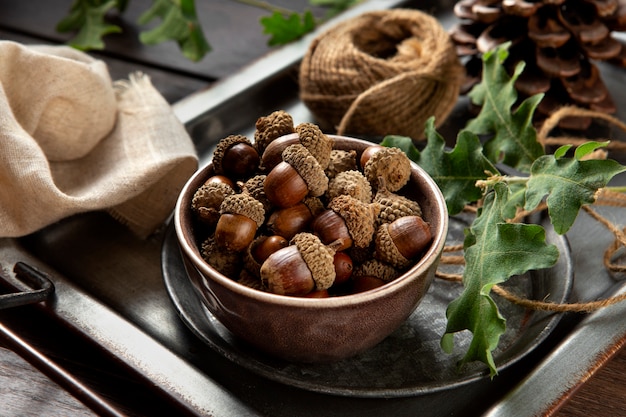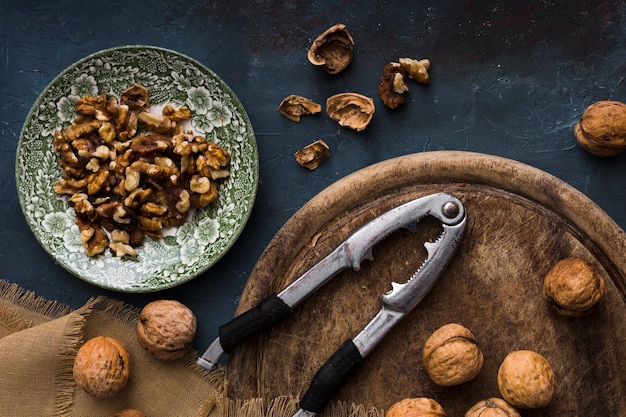(Part 1) Choosing Your Chestnuts - The Foundation of Success

chestnut varieties - A World of Flavour
You might be surprised to learn that there are loads of different chestnut varieties out there, each with its own unique flavour and texture. Here are a few you'll likely encounter: European Chestnuts: These are the most common type, often found in supermarkets. They boast a sweet, slightly nutty flavour and a firm, dense texture. Think of them as the workhorse of the chestnut world. American Chestnuts: These are a bit sweeter than the European variety and have a slightly softer texture. They're a little more delicate and often used in desserts. Chinese Chestnuts: These are smaller and have a delicate, almost floral flavour with a creamy texture. They're perfect for adding a touch of elegance to dishes.Selecting the Perfect Chestnut - Picking a Winner
Now, how do you know you've got a good chestnut? Well, first, they should be firm and free from any damage or cracks. Look for shiny, brown shells with no visible blemishes. If you're not sure, give them a gentle squeeze. A good chestnut will have a bit of give to it, but it shouldn't feel squishy. Think of it as testing the firmness of a ripe avocado – you want a bit of resistance, but not too much.(Part 2) The Great chestnut prep - Making Them Peelable

Making Your Chestnuts Easy to Peel - A Little Trickery
The key here is to make those shells and skins easier to peel after roasting. Here's how:1. Score the Chestnuts: This is the most important step! Take a sharp knife and score an “X” across the flat side of each chestnut. Don't worry, you're not cutting through to the flesh, just making a nice deep incision. This little trick will help those shells to pop open during roasting, making them much easier to peel. Imagine it as a little escape hatch for the steam, preventing those dreaded explosions.2. Soak Them (Optional): This is a bit of a controversial one. Some people swear by soaking the chestnuts in cold water for 30 minutes before roasting. They claim it makes them less likely to explode and helps them cook more evenly. I've done it both ways, and I find it doesn't really make a huge difference. However, if you're feeling a bit anxious about those exploding chestnuts, give it a try. It can't hurt!(Part 3) The Roasting Game - Bringing Out the Chestnut's Best

The Classic oven method - Simple and Reliable
This is the method I use most often. It's simple, reliable, and doesn't require any fancy equipment.1. Preheat Your Oven: Turn your oven to 400 degrees Fahrenheit (200 degrees Celsius). Let that oven get nice and hot so your chestnuts can roast evenly and quickly.2. Spread Your Chestnuts: Arrange your scored chestnuts in a single layer on a baking sheet. Make sure they're not too crowded, you want them to have some space to breathe. Overcrowding can lead to uneven cooking and potentially burnt chestnuts. 3. Roast for 20-30 Minutes: Pop them in the oven and roast until the shells start to crack open and the flesh feels tender. This usually takes around 20-30 minutes, but it might take a little longer depending on your oven and the size of your chestnuts. 4. Let Them Cool: Once they're out of the oven, let them cool slightly before trying to peel them. This will make the peeling process a lot easier and prevent you from burning your fingers. No one wants a painful peeling experience!The Skillet Method (For Smaller Quantities) - A Quick and Smoky Delight
If you're only roasting a small amount of chestnuts, a skillet might be a good option. It's a quick and easy way to roast them, and you can get that lovely smoky flavour.1. Heat a Skillet: Place a dry skillet over medium heat. Let the skillet get nice and hot, but don't let it smoke.2. Roast Your Chestnuts: Add your scored chestnuts to the skillet and cook, shaking the pan occasionally, until the shells begin to crack and the flesh is tender. This will usually take about 15-20 minutes. Keep an eye on them and adjust the heat as needed to prevent burning.(Part 4) Mastering the Art of Peeling - A Gentle Touch is Key
Alright, your chestnuts are roasted, they're cooling, and you're probably feeling a bit triumphant. But now comes the real test: peeling them. Now, this part is definitely a bit messy, so I recommend wearing an apron.The Peel Technique - A Step-by-Step Guide
Here's how to make the peeling process a bit easier:1. Grab a Chestnut: Pick up a chestnut and find the “X” you scored earlier. You should be able to see the skin starting to split open. If not, give it a little nudge. 2. Peel Off the Skin: Gently peel back the outer skin, which is quite rough, revealing a thin, papery inner skin. Don't worry if it tears a bit, it's going to happen! Just be gentle.3. Remove the Inner Skin: This part can be a little tricky, but you can usually get it off by gently rubbing the chestnut between your fingers. It's a bit like peeling a grape! Just be patient, and the skin will come off with a little bit of effort.Dealing with Chestnut “Explosions” - A Quick Fix for Accidents
Now, here’s the thing, sometimes, despite your best efforts, a chestnut might explode. It's not that common, but it happens. If it does, don't panic! Just scoop up the exploded chestnut, give it a quick rinse, and move on. It's all part of the chestnut roasting experience.(Part 5) Sweetening the Deal: Chestnut Dishes - Beyond the Basics
So, you've got your perfectly roasted chestnuts, what next? Well, there are endless possibilities! From sweet to savoury, chestnuts are incredibly versatile.Chestnut Treats - A Delight for Your Sweet Tooth
Here are a few of my favourite ways to use roasted chestnuts: chestnut stuffing: I love making a festive stuffing with chestnuts, cranberries, and herbs. It's a classic combination that never fails to impress. The sweetness of the chestnuts balances perfectly with the tartness of the cranberries and the savory herbs. chestnut cake: Chestnuts add a delightful flavour and a beautiful texture to cakes. Try making a simple chestnut cake with a little bit of cinnamon and nutmeg for a delicious autumnal treat. The sweetness of the chestnuts is enhanced by the warm spices. chestnut puree: This is a fantastic base for making chestnut-based desserts. You can use it as a filling for tarts, pies, or even as a topping for ice cream. The puree is smooth and creamy, perfect for adding a touch of luxury.Chestnut Savories - Unexpected Delights
Don’t think chestnuts are just for desserts! They can add a surprising touch to savory dishes too. chestnut soup: This is a hearty and warming soup that’s perfect for a chilly evening. You can add other ingredients like pumpkin or potatoes to make it even more substantial. The nutty flavour of the chestnuts adds depth and complexity to the soup. Chestnut Risotto: Chestnuts add a creamy and nutty flavour to risotto. Try pairing them with mushrooms and sage for a delicious autumnal combination. The sweetness of the chestnuts balances beautifully with the earthy flavours of the mushrooms and sage. Chestnut Salad: This might sound unusual, but chestnuts can add a crunchy texture and a subtle sweetness to salads. Try pairing them with other seasonal ingredients like apples and walnuts. The addition of chestnuts adds a unique twist and a textural contrast to the salad.(Part 6) Storage Solutions - Keeping Your Chestnut Bounty Fresh
You’ve got your perfectly roasted chestnuts, but what if you don’t use them all up straight away? Don’t worry, there are a few ways to store them.Refrigerating Your Chestnuts - Short-Term Storage
The Best Method: Once you’ve peeled your chestnuts, you can store them in an airtight container in the refrigerator for up to 3-4 days. This is a great option if you're planning on using them within a few days. Freezing for Longer Storage: If you want to keep your chestnuts longer, you can freeze them. Simply place them in a freezer-safe bag and freeze for up to 3 months. They’re best used in cooked dishes like soups or stews.Chestnut Preservation - A Longer Shelf Life
Canning: You can also preserve roasted chestnuts by canning them. This is a bit more time-consuming, but it allows you to store them for a longer period. Just follow a tried and tested canning recipe.(Part 7) Chestnut cooking tips from the Trenches - Learning from Experience
I’ve been there, done that, and definitely got the t-shirt when it comes to cooking chestnuts. Here are a few tips I’ve learned along the way: Don’t Overcrowd the Pan: This is crucial! If you overcrowd the pan, your chestnuts won’t roast evenly, and they might end up with a slightly burnt flavour. Give them some breathing room. Keep an Eye on the Oven: Keep a close eye on your chestnuts while they're roasting. You want to make sure they don’t burn. You might need to adjust the roasting time depending on your oven and the size of the chestnuts. Experiment with Flavours: Don’t be afraid to experiment with different flavour combinations. Try adding herbs, spices, or even a touch of sweetness to your roasted chestnuts. There's a whole world of culinary possibilities waiting to be explored!(Part 8) FAQs: Your Chestnut Questions Answered - Clearing Up the Confusion
Let’s clear up some common chestnut conundrums:
1. Why do my chestnuts explode?
Chestnuts explode when they're heated too quickly and the steam inside has nowhere to escape. That's why scoring them is so important! The “X” you make allows the steam to escape and prevents them from exploding. It's like a little safety valve for your chestnuts.
2. Can I use frozen chestnuts for roasting?
It's not recommended. Frozen chestnuts tend to become mushy and lose their flavour when roasted. It's best to use fresh or thawed chestnuts for the best results.
3. Can I eat the chestnut skin?
You can, but it's not particularly palatable! The outer skin is tough and fibrous, and the inner skin can be a bit bitter. It's best to peel them before eating.
4. Are chestnuts good for you?
Absolutely! Chestnuts are a good source of fiber, vitamins, and minerals. They're also naturally gluten-free and low in fat. They're a nutritious and delicious addition to your diet.
5. What if my chestnuts don’t crack open while roasting?
Don't worry, this happens sometimes. If your chestnuts haven't cracked open after the recommended roasting time, just give them a few more minutes in the oven. You can also try poking a few holes in the shell with a fork to allow the steam to escape. This can help them to cook more evenly and crack open more readily.
(Part 9) My Final Chestnut Thoughts - A culinary adventure
There you have it, the secrets to perfectly roasted chestnuts! I hope this guide has helped you understand the process a little better and given you the confidence to try it yourself. Honestly, once you get the hang of it, it’s a really simple and satisfying thing to do. So, next time you’re feeling the autumn chill, why not grab a bag of chestnuts, whip up some delicious treats, and enjoy the magic of this delicious, seasonal ingredient. Go forth and conquer the world of chestnut roasting!Everyone is watching

How to Cook Frozen Lobster Tails Perfectly: A Step-by-Step Guide
RecipesLobster. Just the word conjures up images of lavish meals, special occasions, and a taste of luxury. But let's...

Pigs in a Blanket Cooking Time: How Long to Bake for Perfect Results
RecipesAh, pigs in a blanket. Just the name conjures up images of those delightful little parcels of crispy pastry en...

Pork Fillet Cooking Time: How Long to Cook It Perfectly
RecipesPork fillet, or tenderloin as it's sometimes called, is a real favourite in our house. It's so versatile, and...

The Ultimate Guide to Cooking Delicious Frankfurters
RecipesLet's face it, we all love a good frankfurter. It's a classic, simple, and always satisfying. But let's be rea...

Wolf Meat Recipes: A Guide to Cooking Wild Game
RecipesLet's be honest, you don't see wolf meat at your local butcher shop every day. It's a bit of a wild card, but ...
